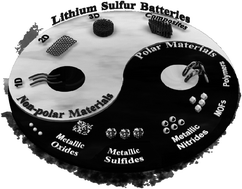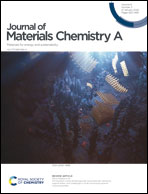Rational design of polar/nonpolar mediators toward efficient sulfur fixation and enhanced conductivity
Abstract
Lithium–sulfur batteries (LSBs) are considered to be promising candidates for use as energy storage systems owing to their high theoretical capacity and high energy density compared with high-level lithium-ion batteries. Despite these advantages, the commercialization of LSBs has been obstructed by certain deficiencies, such as the shuttle effect and poor conductivity of sulfur. On one hand, the chemical interactions between polar materials and lithium polysulfides (LPSs) have been investigated by researchers, particularly related to the shuttle effect. On the other hand, for improving the performance of LSBs, the conductivity of nonpolar materials has also received increased attention. Here, recent research advances involving polar and nonpolar materials for use in LSBs have been reviewed, particularly focusing on the polar interaction toward fixing LPSs, conductivity improvement, and electrochemical performance of LSBs. Subsequently, we have summarized and discussed a combination of polar and nonpolar materials for comprehensively promoting the performance of LSBs. In conclusion, the prospects and research directions for materials that can improve the cycle life and rate performance of LSBs have also been proposed.



 Please wait while we load your content...
Please wait while we load your content...